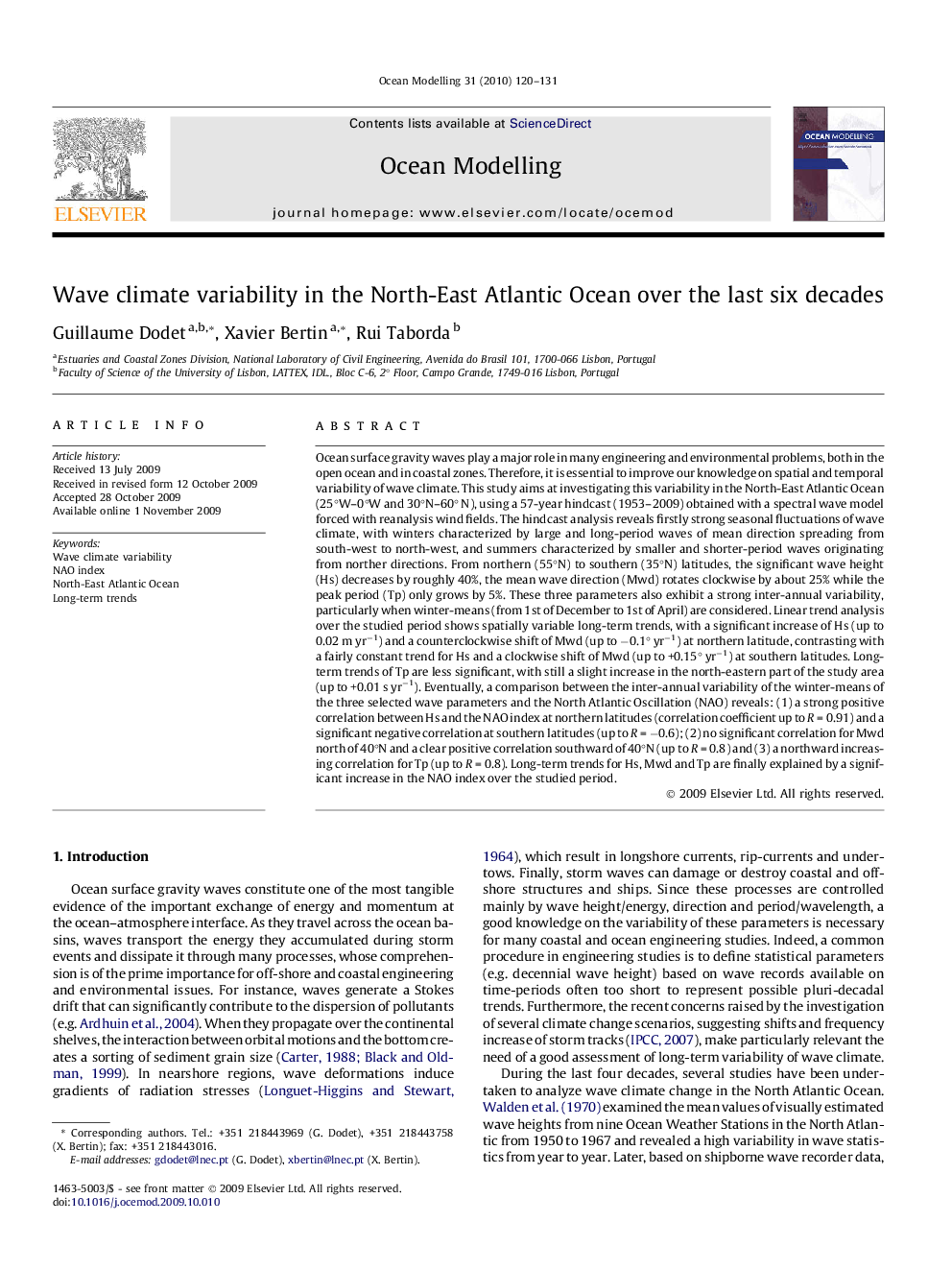| Article ID | Journal | Published Year | Pages | File Type |
|---|---|---|---|---|
| 4552389 | Ocean Modelling | 2010 | 12 Pages |
Ocean surface gravity waves play a major role in many engineering and environmental problems, both in the open ocean and in coastal zones. Therefore, it is essential to improve our knowledge on spatial and temporal variability of wave climate. This study aims at investigating this variability in the North-East Atlantic Ocean (25°W–0°W and 30°N–60° N), using a 57-year hindcast (1953–2009) obtained with a spectral wave model forced with reanalysis wind fields. The hindcast analysis reveals firstly strong seasonal fluctuations of wave climate, with winters characterized by large and long-period waves of mean direction spreading from south-west to north-west, and summers characterized by smaller and shorter-period waves originating from norther directions. From northern (55°N) to southern (35°N) latitudes, the significant wave height (Hs) decreases by roughly 40%, the mean wave direction (Mwd) rotates clockwise by about 25% while the peak period (Tp) only grows by 5%. These three parameters also exhibit a strong inter-annual variability, particularly when winter-means (from 1st of December to 1st of April) are considered. Linear trend analysis over the studied period shows spatially variable long-term trends, with a significant increase of Hs (up to 0.02 m yr−1) and a counterclockwise shift of Mwd (up to −0.1° yr−1) at northern latitude, contrasting with a fairly constant trend for Hs and a clockwise shift of Mwd (up to +0.15° yr−1) at southern latitudes. Long-term trends of Tp are less significant, with still a slight increase in the north-eastern part of the study area (up to +0.01 s yr−1). Eventually, a comparison between the inter-annual variability of the winter-means of the three selected wave parameters and the North Atlantic Oscillation (NAO) reveals: (1) a strong positive correlation between Hs and the NAO index at northern latitudes (correlation coefficient up to R = 0.91) and a significant negative correlation at southern latitudes (up to R = −0.6); (2) no significant correlation for Mwd north of 40°N and a clear positive correlation southward of 40°N (up to R = 0.8) and (3) a northward increasing correlation for Tp (up to R = 0.8). Long-term trends for Hs, Mwd and Tp are finally explained by a significant increase in the NAO index over the studied period.
